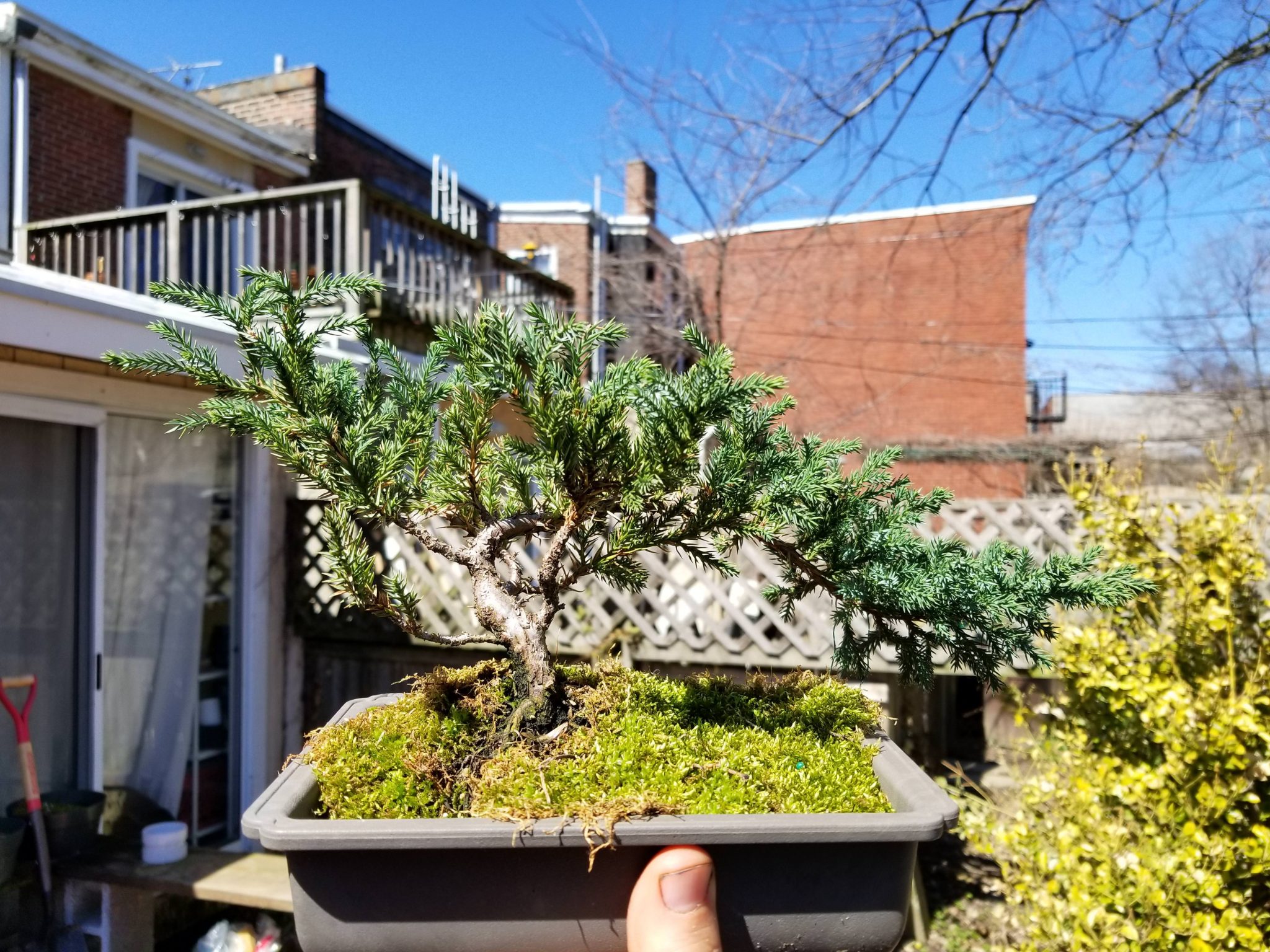Most of us were introduced to bonsai trees in The Karate Kid, and I’m no exception to that. It’s an iconic scene in a spectacular movie when young Danny LaRusso is introduced to the calming and meditative practice of bonsai. The magic of the scene stands true and powerful today. Forgive the quality on that link, it’s the only English version I could find.
As a youngin’ I imitated the movies climactic crane kick a thousand times (I might still do that today, sue me), but I was fixated on growing a bonsai tree for myself. I tried many times and every attempt was met with failure. And a crispy, dead bonsai. Can’t forget that.
My brother bought me a bonsai when I was fifteen and it promptly died under my care. I purchased half a dozen more from various sources: a bonsai specialist, garden centers, even mail-order. Every single plant died under my loving care. I fertilized by the book, pruned them lovingly into appealing shapes, watered them diligently and regularly. I babied these tiny trees with no small amount of affection.
That’s where I went wrong.
The Dwarf Tree
Bonsai aren’t a type of tree but instead are a style of growing. The trees and shrubs used for container growing would reach their full size if they weren’t bound to a tiny container. Trees and plants will grow to whatever size their home allows them to reach. You could take a maple tree seedling and place it in a shallow container, and it might reach a height of two feet. But place that same seedling in the ground and you’ll have a forty-foot tree when it’s mature.
Bonsai aren’t babies. These are adult and mature trees kept to a limited size. A 390-year-old tree in Japan is proof that very old trees aren’t always behemoths. For a long time I was under the impression that these plants needed to be delicately tended to, cared for diligently and kept under my watchful gaze. That level of caring suffocated these trees, or drowned them in water, burned them under fertilizer, and cut their green growth off until a skeletal shape remained.
No wonder they all died.
A Change of Practice
In December of 2016 I received a small juniper shrub, a prickly evergreen that is often used in bonsai. I was determined to give growing these things one more shot, so I repotted the juniper into an appropriate container and watered it once, and then I left it outside all winter long.
“Forget it,” I said to myself, “Caring too much didn’t work. Let’s try letting the tree figure it out on its own.”
Snow piled up, the winter chill reached single digits, and I never touched the damn tree. Amazingly the juniper survived through the winter, so I gave it one light application of fertilizer and snipped a few branches and growing segments. I’d water it once a week at most but largely let the thing take care of itself.
Halfway through the summer I realized the juniper had really started to grow. It looked happy and healthy. So I ignored it again.
Here we are in the spring of 2018 and that little juniper is still kicking. It actually looks pretty god damn good, but it never would have if I smothered it with too much attention.
It prospered only when I gave it space, just enough attention, and plenty of fresh air.
Trees and People
To have that kind of relationship with something you want to see grow and be happy isn’t easy, even when it’s ourselves. Our instinct and perception is that we need to be one hundred percent on at all times to foster growth. That isn’t necessary. Sometimes you need to trust and have faith that shit’ll work out.
Too much attention in one area puts us out of balance, and sometimes it can even smother the object of our affection. Back off, offer that love and aid as it’s needed, but encourage that space and self-reliance. I have a feeling that applies to more than trees. Trees need that stress to grow strong, and we need to allow it to happen.
And that’s just the way it is.


